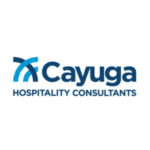 To an outsider, the hotel room price may be just a number that varies from hotel to hotel, guest to guest from time to time. But that’s not the reality. A lot of thought and research goes into developing a hotel pricing strategy that makes perfect sense to the customers and the business.
To an outsider, the hotel room price may be just a number that varies from hotel to hotel, guest to guest from time to time. But that’s not the reality. A lot of thought and research goes into developing a hotel pricing strategy that makes perfect sense to the customers and the business.
An appropriate price strategy is an important aspect of hotel revenue management because the right price can translate into healthy profit margins, which confirms your business growth.
A well-optimized pricing strategy needs to answer these 6 questions:
1. Are your prices optimized across all OTAs?
The relationship you have with your OTA is definitely valuable. It helps you to drive maximum revenue for the business. The hotel dynamics are changing and it’s evident that OTAs play a significant role. When it comes to optimizing OTA hotel room bookings, you need to analyze:
- The source of your maximum bookings
- Do you attract local bookings or foreign bookings? If both, then which bookings are higher?
This analysis helps you to understand the effective ways to maximize OTA hotel bookings by creating an optimum pricing strategy across OTAs.
2. Have you considered the demand-supply balance while setting the prices?
The demand-supply balance needs to be maintained while setting the price. The demand has to match with the available inventory to derive an optimal price with the help of data analytics. If the demand is high, the pricing should be high too, and vice-versa.
It is seen that if the prices are kept low, you generate more bookings at the cost of eating into your profit margins. However, if the prices are high, there’ll be more rooms unoccupied. Thus, it is clear that price is an effective variable that can encourage or discourage demand.
3. Are you monitoring your competitor’s prices?
This is a key factor. In a highly competitive market, it is essential that you take into account the price quoted by your competitor. The consumers mostly compare the hotel room’s price offers to decide on the best deal. Therefore, it is important that there are no high fluctuations in the price range across various channels.
If the competitor is offering a low price, a major chunk of business will go to them. Thus, it is important to keep yourself updated with the current industry trends and act accordingly.
4. Is your pricing strategy aligned with your hotel image?
If you have not put enough thought in setting prices, it can challenge the overall objectives of your business. You may also destroy all your brand-building efforts. If you have positioned yourself as a three-star property, offering rates of a five-star property will confuse the customers. And when they are confused, they just walk away from you into the lap of your competitor.
5. Are you analyzing the real-time market analysis?
If you are not, then you should be. Evaluate real-time data on a regular basis, multiple times per day, if that’s possible. Analyzing real-time data gives you an opportunity to evaluate the immediate hotel pricing strategy.
If there’s an unexpected rise in the demand, room rates can change hourly. Analyzing your data real-time will help you make quick decisions.
6. Have you identified your customers?
This is a critical factor when you decide on your pricing strategy. Identify the target customer segments that can bring business and accordingly set prices to satisfy each segment.
A hotel pricing strategy is certainly critical to the success of the hotel. A well-designed and a well-optimized pricing strategy can boost hotel revenues. Deriving at an optimized pricing strategy requires you to analyze your information carefully and validate your pricing decision thoroughly.


















